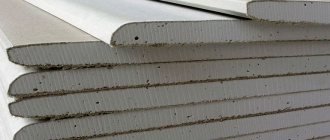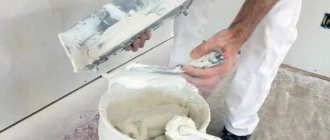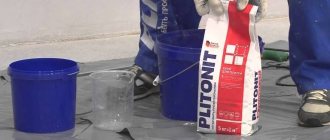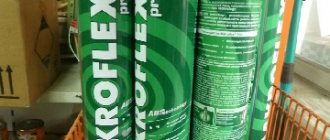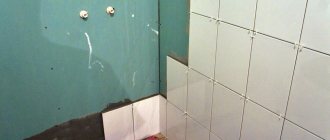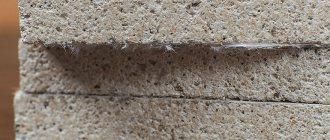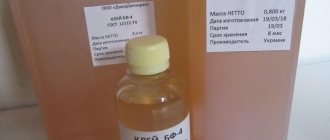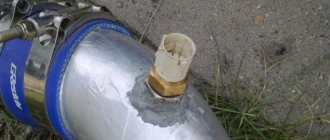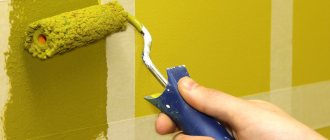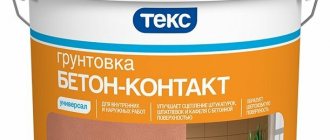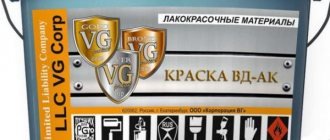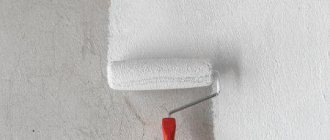For offices and factories
- Homogeneous type
- Heterogeneous coverage
Household linoleum Semi-commercial linoleum Wear resistance classes
Perhaps this is one of the most versatile floor coverings. It is laid both in ordinary apartments, and in offices, and in government institutions. Depending on the purpose, there are three main types: household, commercial and semi-commercial - what is it and how do you know which one you need?
In fact, it was relatively recently that flooring began to be divided into types. It is believed that retailers were the first to do this - it was more convenient to explain to customers the differences between types of product and its wear resistance. The classification was also appreciated by manufacturers. So much so that they themselves began to use this terminology.
How the material works and where it is used
Semi-commercial linoleum always consists of several layers (that is, it is heterogeneous).
The structure of the material is close to the structure of household linoleum:
1. The topmost layer is protective. It prevents the floor covering from wearing out prematurely, ruining the pattern. This layer is thicker than that of household linoleum.
2. The finishing layer gives the product completeness and shapes its appearance. Linoleum can be one-color (and the palette is very wide), and also have a print imitating wood, stone, or metal.
3. Basis for the drawing.
4. Fiberglass. This increases the reliability of the canvas and saves it from deformation.
5. Foamed polyvinyl chloride base
6. Back layer with markings.
Semi-commercial linoleum is also called office linoleum, since it is mainly used for office floors. However, it can be used in clinics, kindergartens, and stores. This durable material is also well suited for home use.
Since there are no GOST standards for this material, this makes it somewhat difficult to classify this or that material into the so-called class of semi-commercial linoleum. However, the manufacturers of this material themselves maintain certain standards by which it can be determined that this is semi-commercial linoleum.
Typically this type of linoleum has the following parameters:
- product thickness – from 2.2 to 4.5 mm;
- thickness of the top layer (protective) – from 0.35 to 0.6 mm;
- weight of one square meter – from 2 to 5 kg;
- abrasion – from 10 to 15 g/m2;
- standard width - from 1.5 to 5 m (with intervals of 0.5 m).
Structure
The structure is very close to household, has 6 layers - from top to bottom:
- Protective - in household ones its thickness is less, and therefore its resistance to external influences is less.
- Finishing layer - determines the pattern of linoleum.
- Basis for drawing.
- A layer of fiberglass increases the overall strength and fireproof properties of the product.
- A layer of foamed polyvinyl chloride.
- The bottom layer is for gluing, with markings.
How is semi-commercial linoleum classified according to wear resistance?
To select the semi-commercial linoleum that is most suitable for specific conditions, you need to understand what the numerical designations in its labeling mean. This is not difficult. In our country, we adhere to European standards for the classification of floor coverings and the premises where they are used.
According to these rules, there are 3 types of premises:
- residential type of premises is indicated by the number 2;
- office type is indicated by the number 3;
- the production type is indicated by the number 4.
In addition, another parameter is classified - the load to which the floor covering is subjected:
- At low load, the marking indicates the number 1;
- at medium load – number 2;
- at increased load – number 3;
- with a very heavy load - number 4.
To make it more clear, manufacturers also place pictogram icons next to the numbers. They depict houses and people. By looking at the picture and the number next to it, you can quickly figure out whether this linoleum is suitable.
Take, for example, a material marked with the number 32, it is suitable for an office space, and class 31 is good for a home with a large family.
Advantages and disadvantages of middle class linoleum
Very often, this type of linoleum is called an improved household coating, which is inherently a practical and multifunctional product. Among its main advantages are the following criteria:
- no traces from the legs of heavy furniture due to the high strength of the coating;
- moisture resistance, easy to wet clean, and does not deform when in contact with detergents;
- ease of washing and cleaning;
- the presence of a large assortment of designs and color solutions that can easily decorate both domestic and office premises;
- service life, which is on average 10 years; subject to operating rules, this period can be significantly longer;
- affordable cost, compared to more expensive commercial options.
See also: Adhesive for linoleum
Commercial linoleum does not have any disadvantages as such. It fully complies with the declared characteristics and can be used for various types of buildings, except industrial ones, characterized by medium and high traffic levels.
The only drawback is the need to apply a special mastic to the surface, which extends the service life of the coating and performs protective functions.
Abrasion group
Sometimes types of semi-commercial linoleum can differ significantly in cost. As a rule, more expensive material has less abrasion. This indicator is designed to determine how quickly the floor covering will wear out. The abrasion group must be calculated according to the European standard EN660-1.
The abrasion group is determined as follows: a sample of the linoleum being tested is applied to a rotating disk with an abrasive applied to it. When this disk passes 25,000 revolutions, measurements are taken. By comparing the original thickness of linoleum with that obtained after testing, you can determine how the coating has worn off. In accordance with this, it is assigned one of the abrasion groups.
This parameter depends on both the thickness of the protective layer and its composition. Pure polyvinyl chloride, without impurities, is least susceptible to wear. It is this composition that is usually used to cover high-quality semi-commercial linoleum. If you add chalk and quartz sand to PVC, the strength of the coating decreases.
The following abrasion groups are distinguished:
- Group T – material with protection made of pure PVC. When tested, it is erased by 0.08 mm or less.
- Group P - average degree of wear. The abrasion of the top layer is from 0.08 to 0.15 mm.
- Group M – weak abrasion resistance. During testing, 0.15 to 0.3 mm of the protective layer is lost.
- Group F - material with an unacceptably large amount of impurities - more than 65 percent. Its strength is very low. Erasure – from 0.3 to 0.6 mm.
Semi-commercial linoleum has abrasion from 10 to 15 g/m2 and group P.
Laying technology
The process of installing a semi-commercial coating is no different from laying household linoleum and can easily be done independently. Installation consists of the following steps:
Preparing the floor . The base must be brought into a perfectly even state, since all flaws will certainly appear on the finishing coat and reduce its service life. The old coating must be removed. If linoleum is laid on a wooden base, it should be covered with sheet material - plywood, chipboard or plasterboard.
Floor measurement. The surface area to be finished is measured, taking into account all architectural features. If the walls are uneven, you need to buy linoleum in excess, adding a few centimeters to each edge.
Material adjustment. Before fixing to the base, linoleum sheets are laid on the floor, the patterns on them are adjusted to each other. The material is cut using a long ruler and a regular sharp knife.
Joining and securing seams . To make the joints even, it is better to lay the coating overlapping and then evenly cut right through the joint. After this, the edges of the canvases are glued together using cold welding.
About the thickness and quality of the protective layer
This is one of the most important characteristics of semi-commercial linoleum. Thanks to the protective transparent film, the design does not lose its freshness, and the coating itself wears out more slowly. After all, only this top film is erased during loads.
If the thickness of the top protective layer is from 0.3 to 0.6 mm, then this means that we have semi-commercial linoleum or, as it is also called, reinforced household linoleum. Naturally, with an increase in the protective layer, the price of the product also increases, but its service life increases significantly.
Some manufacturers add additional beneficial properties to the protective layer. For example, the Tarkett company, using its own technological developments, makes the coating easy to clean and especially durable:
- Thus, EXTREME PROTECTION increases the strength of Tarkett linoleum seven times (when compared with conventional household linoleum).
- The TITANIUM layer is an additional varnish coating.
- TUREX is a special embossing method that makes Tarkett linoleum as similar as possible to one of the natural expensive materials: stone, wood or ceramic tile.
Embossed linoleum.
Linoleum in the kitchen
The Sintepros coating from Tarkett can withstand serious loads. Its installation is standard for semi-commercial coatings. Among the advantages are affordable prices. A square meter of linoleum will cost much less than tiles or other similar coatings. The material is heat-resistant and waterproof. Linoleum is durable and lasts a long time. The colors of linoleum allow it to be used in any interior.
The disadvantage is that the products are made only on a synthetic basis. If people who suffer from allergies live in the apartment, then it is better to choose something else. Also, sometimes the coating may require treatment with special mastics.
The basis of semi-commercial linoleum
The basis of semi-commercial coating can be:
Felt (needle-punched material)
Polyvinyl chloride (foam type)
The use of a PVC base is a relatively new technology that has gained popularity. After all, the joints of such linoleum are very easy to connect with a special compound for cold welding of PVC materials. Moreover, the connection occurs at the molecular level, so it turns out to be hermetically sealed and completely invisible (unlike the standard joining method - with thresholds). The joints will not be afraid of moisture getting in - it will not get inside.
But the felt needle-punched base also has its advantages. For example, it adheres perfectly to any surface and is also very tear-resistant. And on linoleum with such a base, dents from something heavy are less noticeable, and the affordability of the price is more attractive.
Features of application
If you need to improve a room where the humidity level is high, then it is best to purchase a foam version. Felt cannot withstand moisture levels above 5 percent. It will begin to grow mold and rot.
Modern semi-commercial felt linoleums have disadvantages. Thus, there is a need to carefully prepare the foundation. Welding of the fabric should only be carried out by professionals. The resulting coating should be monolithic.
If it is not possible to lay the flooring without joints, then at the joints you should strive for maximum protection from moisture. The first felt products exhibited shrinkage. Now manufacturers have filled the market with special heterogeneous linoleum. He practically doesn't sit down.
About fire safety
In accordance with fire regulations, all materials used in everyday life, in production and in offices have a certain degree of flammability. For linoleum, 4 degrees are defined - from G1 to G4. For the most part, these coatings are classified as grades G3 and G4 (combustible materials).
There is also a flammability indicator (B), for which 3 groups are assigned, as well as smoke generation ability (D), which has 3 groups. The abbreviation RP indicates the degree of flame spread - it classifies the material into one of four groups. There are a number of other indicators. The main thing is to remember the rule: the larger the number following the letters, the more flammable the material is.
For semi-commercial linoleum the situation is like this:
- Flammability degree G3 - G4;
- flammability group B2 - B3;
- ability to generate smoke – D3;
- ability to spread flame - RP1 or RP2.
Pros and cons of coverage
Like any type of flooring, this type also has advantages and disadvantages. Among the main advantages are high wear resistance, heat resistance, good sound insulation qualities, affordable prices, ease of installation and maintenance. Office linoleum of this type is an excellent choice.
The only drawback is very minor: the coating is made entirely on a synthetic basis. Not everyone will like this - today there are lovers of natural, environmentally friendly materials.
What else is worth considering - additional parameters of semi-commercial linoleum
There are a number of pictograms on the roll of material. It would be a good idea to understand them - this will help you avoid mistakes when purchasing:
- If you see a lightning bolt icon, that's good. This means that linoleum is antistatic and will not accumulate electricity, causing an unexpected shock.
- Look for the wheel icon if you are going to move furniture on wheels – bedside tables, chairs, tables – across the floor. This linoleum will definitely withstand all this.
- If you are going to install heated floors, then buy linoleum with the “warm floor” icon.
- Finally, one more parameter is residual deformation. Semi-commercial coating has it at the following level: ≤ 0.17 - ≤ 1.33 mm.
Strength classes
When choosing a material, you will have to come across such a concept as linoleum class. Which one is better to choose? The choice of class is made based on the purpose of the room and the loads on the floor surface:
- for an office with low traffic or an apartment, class 32 coverage is enough;
- for average traffic, it is better to lay class 33 linoleum;
- in high-traffic areas, class 34 coating is used;
- Class 41 is designed for high floor loads - warehouse and industrial premises.
Table. Properties and characteristics of semi-commercial linoleum
| Options | Values |
| Wear resistance class | 31, 32, 33 classes. |
| Group and degree of abrasion | From 10 to 15 g/m2, group “P”. |
| Protective layer thickness | From 0.3 to 0.6 mm. |
| The basis of semi-commercial linoleum | Felt (needle-punched material); Polyvinyl chloride (foamed type). |
| Length | From 20 to 30 meters. |
| Width | 1.5; 2; 2.5; 3; 3.5; 4; 4.5; 5 m. |
| Coating thickness | From 2.2 to 4.5 mm. |
| Linoleum weight | From 2 to 5 kg/m2. |
| Flammability | Degrees G3 - G4. |
| Flammability | Groups B2 - B3 |
| Smoke generation ability | D3 |
| Ability to spread flame | RP1 - RP2 |
| Permanent deformation | ≤ 0.17 - ≤ 1.33 mm. |
If you notice an error, a non-working video or link, please select a piece of text and press Ctrl+Enter .
0
A little history of linoleum
The distant ancestor of modern rolled and tiled flooring can be considered oiled sheets of dense fabric, which were used not only for sails, but also for laying on the floor. In 1763, Englishman Nathan Smith patented a material that consisted of woven panels coated with a hot mixture of pine resin, brown dye, beeswax and linseed oil - camptulicon. The new flooring was not particularly popular among buyers, but the manufacturer continued to experiment and look for optimal combinations.
In 1843, natural rubber and ground cork were introduced into the composition of the future linoleum, but due to a serious increase in the price of ingredients (due to the invention of car tires), the composition was processed and modified linseed oil - drying oil - was introduced. The technology for producing the finished product was also improved, and on December 19, 1863, Frederick Walton received a patent for the production of linoleum (linum - flax and oleum - oil). In subsequent years, the recipe, as well as the manufacturing method, was refined. At the beginning of the 20th century (Great Britain) supplied the European market with a floor covering made from a mixture of several vegetable oils (modified) called glyphthalic linoleum. The same goods were also produced by factories of the Russian Empire located in Riga, Odessa and other cities.
Marmoleum.
Today this product is produced by the largest factories in the world - Forbo, Tarkett and others. In Europe, it retained its old name - natural linoleum. In our country it is known by the name of the registered trademark of the Forbo Flooring Systems company - marmoleum or marmoleum.
Table 1 . Advantages and disadvantages of marmoleum
| pros | Minuses |
| High wear resistance | Permanent characteristic odor of oils |
| Bacteriostatic | Brittleness at sub-zero temperatures |
| Non-slip surface | High price |
| Moderate fire resistance | The need for installation using special adhesives |
| Antistatic | |
| Disposal by biodegradation | |
| Easy cleaning and care | |
| Health safety for adults and children |
On the territory of our country since the mid-50s. last century, due to the scarcity of natural raw materials, a new product was developed - PVC linoleum. Although the composition of this floor covering had nothing in common with natural material, nevertheless, its name was retained.
PVC linoleum.
Table 2 . Features of PVC linoleum
| pros | Minuses |
| High wear resistance | In case of fire, releases toxic substances |
| Moisture resistance and water resistance of the surface | Accumulates static electricity and attracts dust |
| Acceptable prices | Most collections have a smooth, slippery surface |
| Easy styling | |
| Easy care | |
| Long service life under suitable operating conditions |
Synthetic linoleum is produced homogeneous (high-density with a uniform structure) and heterogeneous (multilayer).
The second type consists of:
- A base layer made of foamed polyvinyl chloride or polyester threads that form a non-woven felt fabric. The Tarket and Utex assortment includes collections on a duplicate basis;
- The front layer, which is a thin, high-density layer of PVC, onto the flat surface of which a decorative pattern is applied by printing in accordance with the designer’s idea: board, parquet, ceramics, abstraction and much more;
- A wear layer is a so-called transparency, a protective thin layer (usually polyurethane or complex with special additives) that protects the product from abrasion and other loads, as well as household chemicals, water, sunlight, etc.
Large factories add additional layers to the linoleum structure. This could be fiberglass for reinforcement, sealing layers for the backside that prevent water absorption, etc.
To summarize: now on sale you can find linoleum products manufactured in the following formats:
- Natural marmoleum in rolls, tiles and combi versions (HDF-based linoleum products);
- PVC linoleum, homogeneous and heterogeneous rolled, cut into strips or tiles;
- A synthetic special material used exclusively for difficult operating conditions (railway or sea transport, industrial premises, etc.). These are relin, colloxylin or nitrocellulose linoleum and others.
In domestic conditions, as well as for retail, commercial and public facilities, the first two types are used. But where and what exactly – read below.
Coating care
Caring for semi-commercial linoleum is quite simple. It is enough to wipe it with a cloth soaked in water or soap solution. It is not recommended to use abrasive cleaners or hard sponges, as they can damage the top protective layer of the coating. Any stains that appear must be removed immediately, without allowing them to penetrate deep into the protective layer. Furniture legs should be covered with special protective stickers.
So, semi-commercial linoleum is an ideal flooring option for rooms with average traffic. In general, by choosing this product, the buyer saves a lot without compromising the quality of the coating. And yet, before purchasing, correctly calculate the features of the room and its traffic, so that the linoleum will last for many years and not lose its appearance.
What it is
Semi-commercial linoleum Tarkett and description of popular collections
Semi-commercial linoleum is a cross between the commercial and household categories of this finishing material. Compared to the first, it turns out to be lighter and more convenient to install, and it is superior to the second in strength and resistance to various mechanical influences. The width of the canvas is 200 centimeters, it easily tolerates strong heat, and almost does not suffer from open fire.
Some companies are trying to get ahead of competitors by producing non-slip coatings, taking care of protection from fading in the sun and increasing resistance to water ingress. It will not be a problem to find semi-commercial linoleum impregnated against pathological fungi and bacteria (it is compatible with floor heating systems).
Where to buy inexpensively
You can buy semi-commercial linoleum inexpensively in Moscow, St. Petersburg, Kazan, Novosibirsk and other cities of the Russian Federation in popular online stores. You most likely will not find prices on official websites - this linoleum is sold through a dealer network. The prices are recommended by the manufacturer himself, and dealers adhere to them.
Below are linoleum stores with inexpensive prices:
Having looked around the stores, you can easily choose inexpensive semi-commercial linoleum to decorate your home or office, which will fully comply with the requirements, standards and is guaranteed to last without losing its original characteristics for many years.
Reviews
In conclusion, we would like to provide customer reviews on the use of semi-commercial linoleum.
Anastasia, Moscow city
My husband and I purchased semi-commercial linoleum for an apartment from the Tarkett company from the Idyll collection with a wood pattern. We laid it ourselves in the living room without gluing, only in a few places we had to use double-sided tape. For the first 3-4 days there was a characteristic smell in the room, but then it gradually disappeared and for the third year now there are no complaints about the quality. Very nice finish and easy to clean with warm water.
